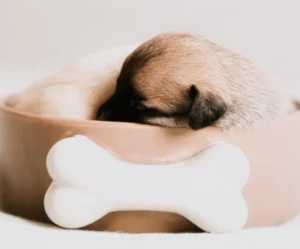
$150.00
Crate Training Tips:
• Feed meals in the crate: This encourages your puppy to associate the crate with positive things.
• Place the crate in a quiet area: Choose a location where your puppy won’t be disturbed by noise or activity.
• Supervise your puppy: Don’t leave your puppy in the crate for extended periods, especially during the initial training stages.
• Be patient and consistent: Crate training takes time and patience.
Crate Safety:
• Proper ventilation: Ensure the crate is well-ventilated to prevent overheating.
• Secure the crate: Always secure the crate door when your puppy is inside.
• Monitor your puppy: Never leave your puppy unattended in the crate for long periods.
A puppy crate can be a valuable tool for training and providing a safe space for your furry friend. By using it correctly and being patient, you can help your puppy feel secure, learn good habits, and enjoy a comfortable transition to their new home.
A puppy crate can be a fantastic tool for training and providing a safe space for your furry friend. Here’s a breakdown of the benefits and how to use it effectively:
Benefits of a Puppy Crate:
• Potty Training: Crates help with potty training by creating a den-like environment where puppies are less likely to soil their sleeping area.
• Safety and Security: Crates provide a safe haven for your puppy, especially when you can’t supervise them. They prevent them from getting into trouble or chewing on things they shouldn’t.
• Stress Reduction: Crates can reduce anxiety for puppies, especially when they’re away from their littermates or in a new environment.
• Sleep and Rest: Crates encourage puppies to settle down and sleep, promoting healthy sleep patterns.
• Travel and Transport: Crates are essential for travel, making it safe and convenient to transport your puppy in a car or on public transportation.
Choosing the Right Crate:
• Size: The crate should be large enough for your puppy to stand up, turn around, and lie down comfortably. Avoid a crate that’s too large, as it can create a bathroom area within the crate.
• Material: Crates are typically made of wire, plastic, or a combination of both. Wire crates offer good ventilation, but plastic crates provide more privacy.
• Type: Crates come in single-door or double-door options. Single-door crates are more affordable, while double-door crates offer more flexibility for access.
Introducing the Crate:
• Positive Introduction: Make the crate a positive experience by placing treats, toys, and a comfortable bed inside.
• Gradual Acclimation: Start with short periods in the crate and gradually increase the time as your puppy becomes comfortable.
• Never use the crate as punishment: The crate should be a safe and comforting place.


Reviews
There are no reviews yet.